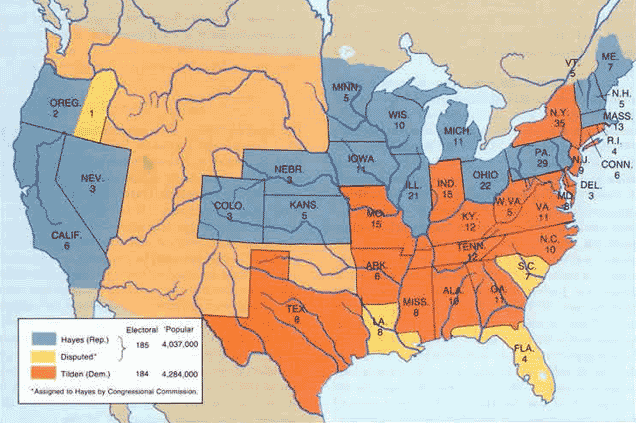Compromise of 1877
In the months following the Election of 1876, but prior to the inauguration in March 1877, Republican and Democratic leaders secretly hammered out a compromise to resolve the election impasse and address other outstanding issues.

Under the terms of this agreement, the Democrats agreed to accept the Republican presidential electors (thus assuring that
Rutherford B. Hayes would become the next president), provided the Republicans would agree to the following:
- To withdraw federal soldiers from their remaining positions in the South
- To enact federal legislation that would spur industrialization in the South
- To appoint Democrats to patronage positions in the South
- To appoint a Democrat to the president’s cabinet.
Once the parties had agreed to these terms, the
Electoral Commission performed its duty. The Hayes’ electors were selected and Hayes was named president two days before the inauguration.
Why did the Democrats so easily give up the presidency that they had probably legitimately won? In the end it was a matter of practicality. Despite months of inflammatory talk, few responsible people could contemplate going to war. A compromise was mandatory and the one achieved in 1877, if it had been honored, would have given the Democrats what they wanted. There was no guarantee that with
Samuel J. Tilden as president the Democrats would have fared as well.
To the four million former slaves in the South, the Compromise of 1877 was the “Great Betrayal." Republican efforts to assure
civil rights for the blacks were totally abandoned. The white population of the country was anxious to get on with making money. No serious move to restore the rights of black citizens would surface again until the 1950s.
